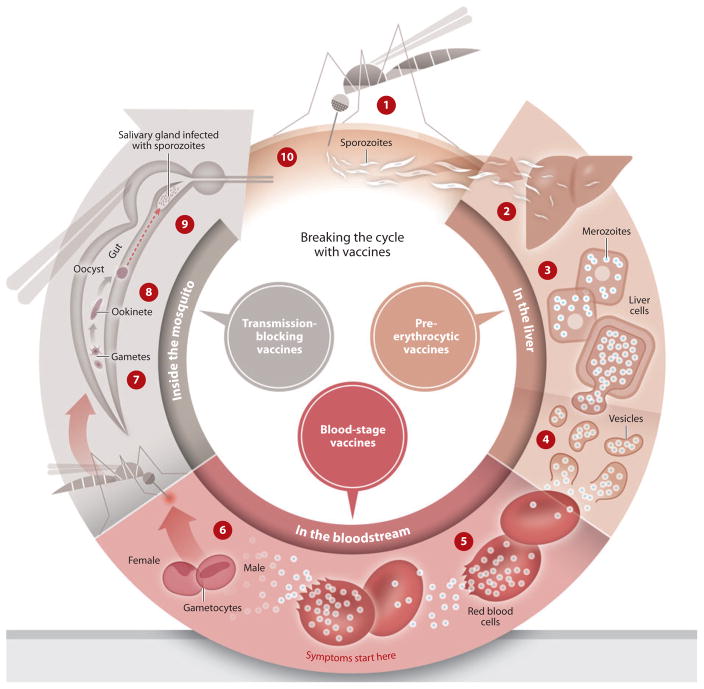Figure 1.
Life cycle of malaria and stages targeted by vaccines. ➀ An infected female Anopheles mosquito bites a person, injecting Plasmodium parasites, in the form of sporozoites, into the bloodstream. ➁ The sporozoites pass quickly into the human liver. ➂ The sporozoites multiply asexually in the liver cells over the next 7–10 days, causing no symptoms. ➃ The parasites, in the form of merozoites, burst from the liver cells. ➄ In the bloodstream, the merozoites invade red blood cells (erythrocytes) and multiply again until the cells burst. Then they invade more erythrocytes. This cycle is repeated, causing fever each time parasites break free and invade blood cells. ➅ Some of the infected blood cells leave the cycle of asexual multiplication. Instead of replicating, the merozoites in these cells develop into sexual forms of the parasite, called gametocytes, that circulate in the bloodstream. ➆ When a mosquito bites an infected human, it ingests the gametocytes, which develop further into mature sex cells called gametes. ➇ The gametes develop into actively moving ookinetes that burrow into the mosquito’s midgut wall and form oocysts. ➈ Inside the oocyst, thousands of active sporozoites develop. The oocyst eventually bursts, releasing sporozoites that travel to the mosquito salivary glands. ➉ The cycle of human infection begins again when the mosquito bites another person. Figure adapted from PATH Malaria Vaccine Initiative.

